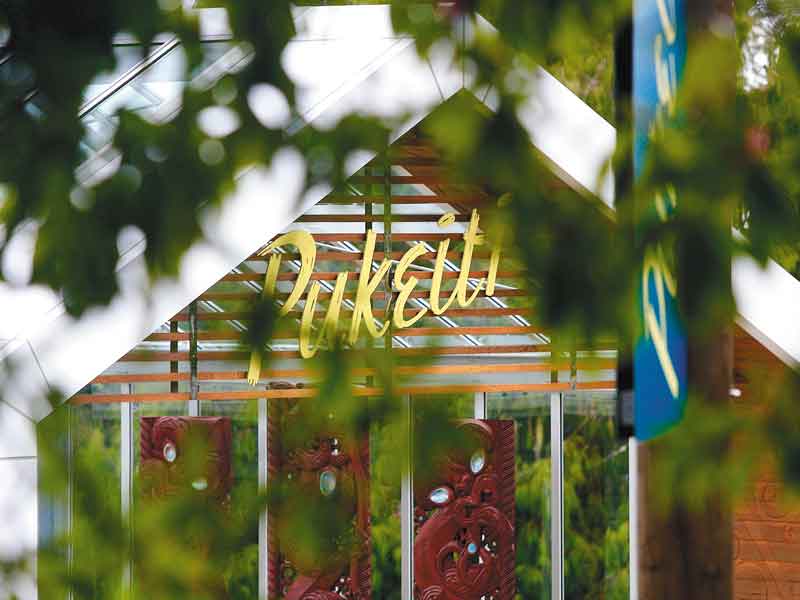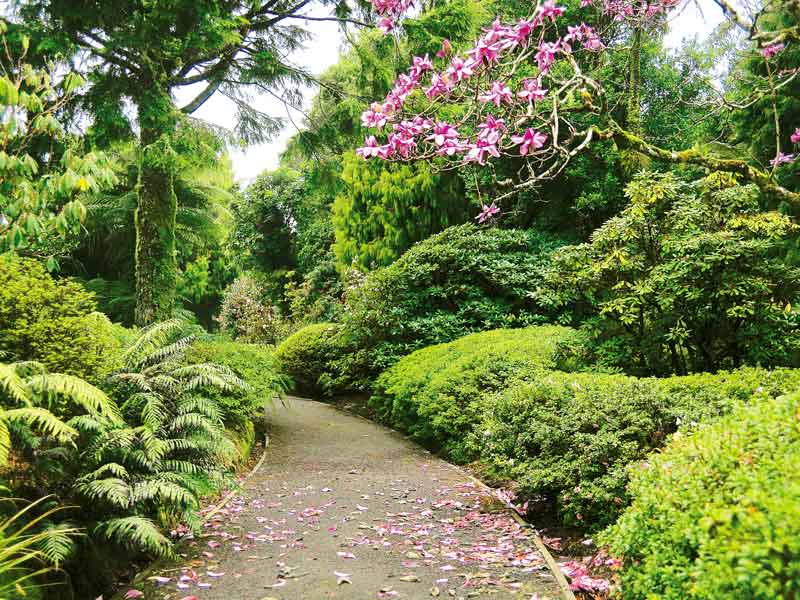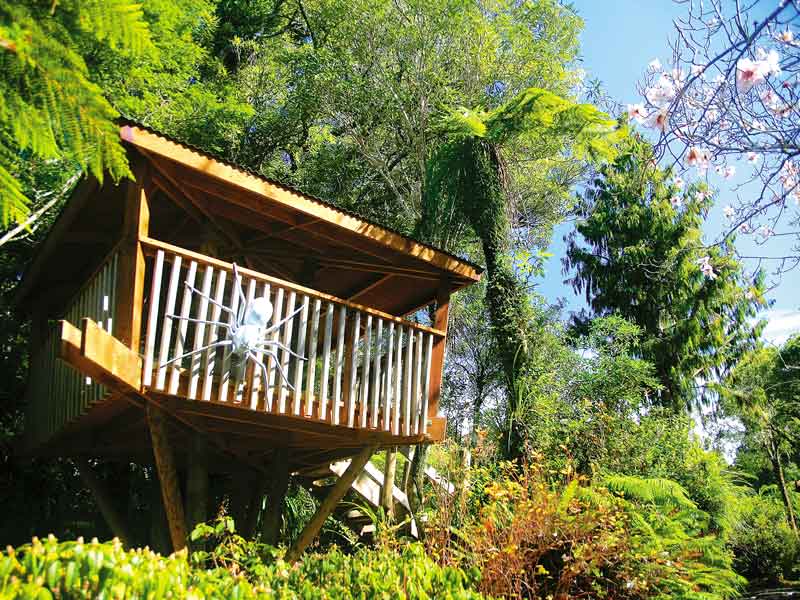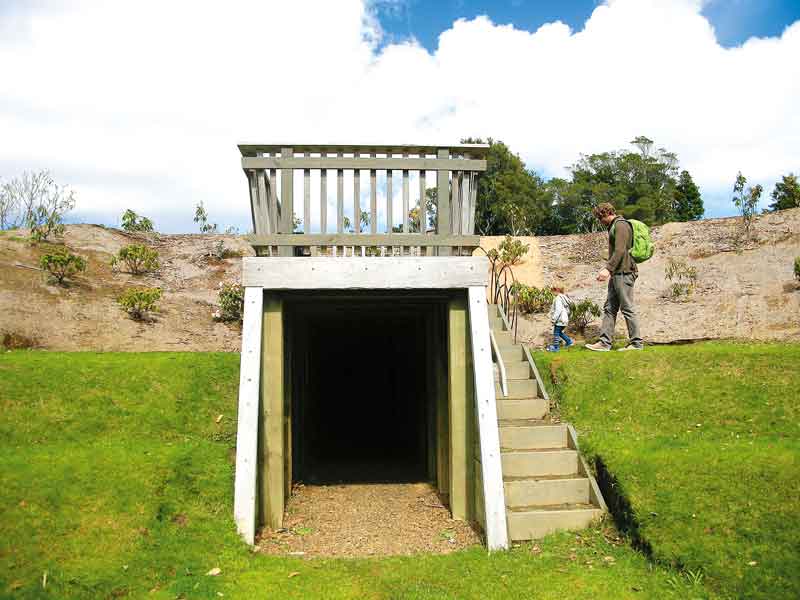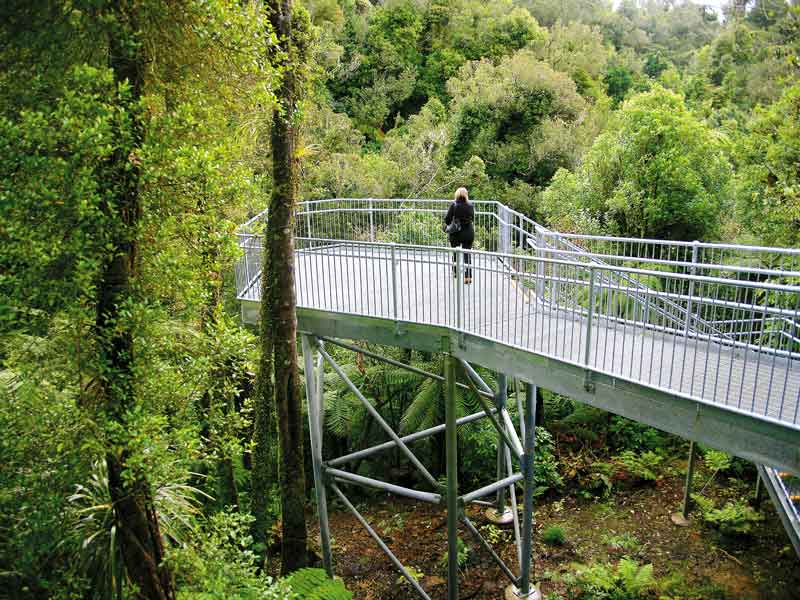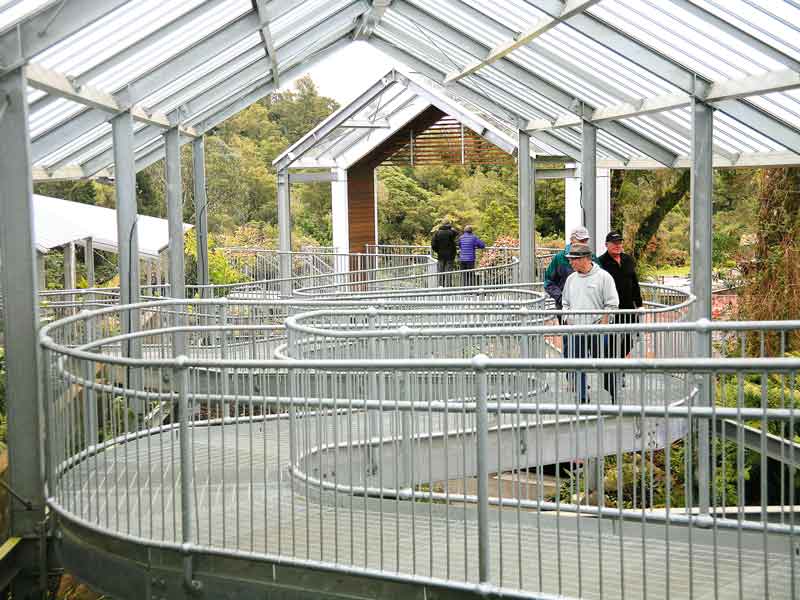Nestled within a rainforest between the lower slopes of the Pouakai and Kaitake ranges in Taranaki, the new entrance to the Pukeiti Rhododendron Garden looks like the gates to a theme park, one where the magic is floral with a slight dash of fantasy and imagination.
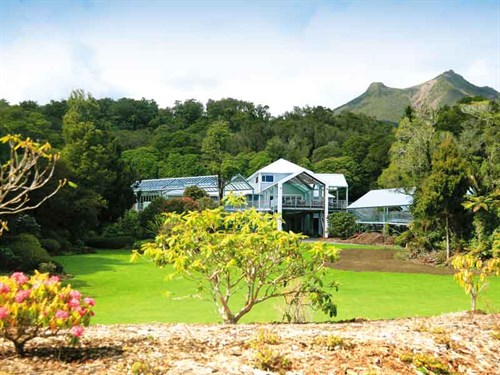
The new entrance to Pukeiti’s Rainforest Pavilion (the former Gatehouse) features three carved totara panels, relocated from the covered House of Treasures below the Founders Garden. Representing Papatuanuku—Earth Mother, Tane Mahuta – Lord of the Forest, and Ranginui—Sky Father, it is a popular spot for a group photograph or ‘selfie’.
The renovated Founders Café is to the left with a large covered outdoor area leading to the upper section of the Vireya House and continues to my favourite spot—the viewing platform overlooking the water wheel in the Pukeiti Stream. In the lower section of the Vireya House, there is the first of four tree houses—the Kokopu. Standing in a rock pool, it is supported by four aquariums showcasing native fish life.
The garden
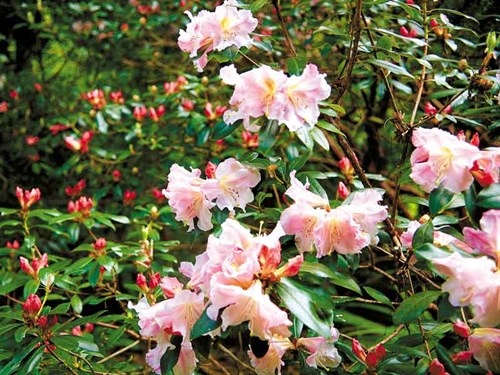
In the garden itself are the other tree houses, each one adorned with a metallic sculpture of insects. From the Kokopu tree house, proceed along Matthews Walk to Kapokapowai, the dragonfly, then across Larcom Walk to Pungawerewere, the spider, and finally Tokoriro, the grasshopper.
There are also satchel activities numbered one to four along the trail, popular with school groups and families. You can pick up a satchel and the Explorer Tree House Trail map at the Founders Café or simply follow the markers and signposts.
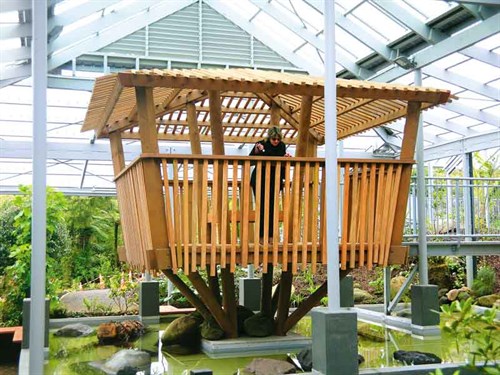
Also new in the garden is the Misty Knoll. Already a favourite with children, its volcano-like craters—one lined with red and pink azaleas, the other topped with white scented rhododendrons—is designed to be a secret garden. At the bottom is a tunnel reminiscent of a mineshaft opening, a definite magnet for inquisitive children to scamper through.
The Keiller Garden completes the current set of projects that together embrace the evolving union of natural landscape and clever design concepts, enticing you to explore the exotic environment. The simple gazebo-like frame sits on the footprint of a gardener’s house that once stood there. The idea behind the framework was a semi-formal garden that could be copied at home using common garden plants. Wooden garden furniture inside the ‘house’ completes the setting, inviting you to pause and relax for a moment.
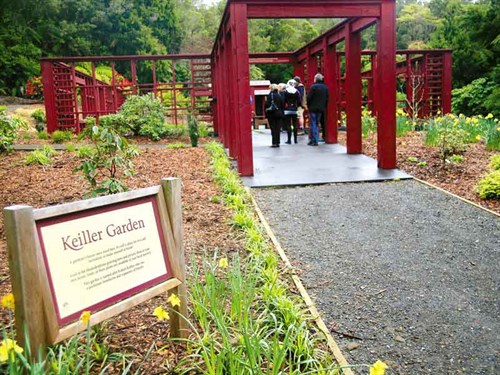
The only project yet to be completed is a new version of the Lodge, which is currently a construction zone with its ornate fireplace still intact. In the garden itself, information panels have been placed along the main walks, highlighting the adventures of plant explorers who collected many of the rhododendrons on display here.
The new signposts contrast well with the lichen-covered older ones. I don’t know why but even with signposts at every junction, I still get lost. Whether it is in any of the world’s theme parks or formal gardens covering large areas or here at Pukeiti, give me five minutes and I’m hopelessly lost. I have long since given up trying to follow the garden map. I just go for it and wander at will. If the path goes downhill, I’m heading to the sea, and if it goes uphill, eventually I will reach ground zero—the Rainforest Centre.
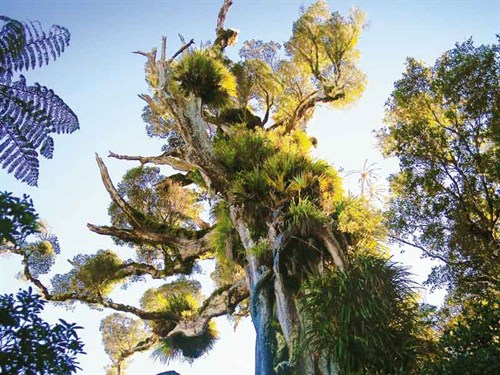
If it’s level, I’m going side to side. In the meantime, I can’t imagine being lost in a more beautiful environment. I am not really a flower or garden person but wandering around this garden detaches you from normal life in a way that is spiritual and soothing. Gently curved sealed, gravel, and grassed paths lead into unexpected bursts of colour. One of the tree houses will appear out of nowhere and seats and shelters invite you to rest for a moment to listen to the birdsong or the sound of running water somewhere in a nearby gully.
One feature I had never seen before was a giant rata tree, its thick trunk soaring into the sky above the ponga and rhododendron bushes growing around its base. It looked ancient, its size a reminder that the rainforest surrounding Pukeiti had been there for a very long time.
The White Walk
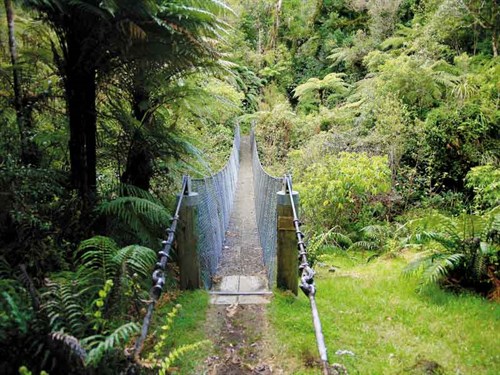
The sign at the entrance to Pukeiti invites you to encounter the mystery. On this visit, I decided to walk one of the mysterious trails that leave the main garden into the surrounding rainforest. Called the White Walk, it leads to a swing bridge; something I thought would make a welcome change to photograph instead of rhododendron blooms. The manicured formal garden changed instantly into a lush green tangle of mountain bush. Twenty minutes into the walk, it rained heavily in a brief shower, the raindrops glistening in the canopy when the sun came back out. Now I know why it’s called a rainforest.
The trail dropped down into a gully where the swing bridge crossed a crystal clear stream. I couldn’t help but drink from cupped hands. Clear, sweet, and cold. I’m sure the quality would change once it flowed through the dairy farms below the rainforest. Beside the swing bridge, there is a grassed clearing with a wooden seat partly obscured with small ferns. It was a perfect excuse to linger before tackling the uphill trek back to the main path.
On the way back to the garden, I was joined by a friendly fantail that stayed with me all the way, adding another moment of wonder on what had been an exceptional afternoon.
The recent upgrades at Pukeiti have turned this world famous garden into an all-weather, year-round visitor attraction that will delight, inspire, educate, and captivate for many decades to come.
More details
- Open daily from 9am to 5pm. Admission is free.
- Call 0800 736 222 or visit pukeiti.nz.

